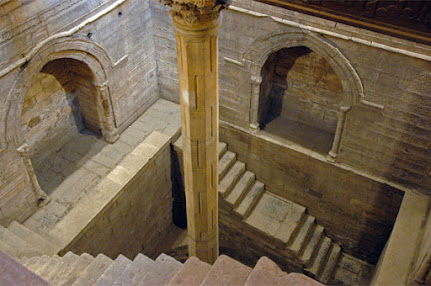Environmental Change as a function of 'Water Management'
Water management has been an observed phenomena since the advent of civilisation in the 'Fertile Crescent' over 5,000 years ago when 'intensive hydraulic irrigation systems' became common place on the alluvial plains of the Euphrates and Tigris rivers (Pollock, 1999). Other well known historical examples of irrigation systems include the lower Nile in Egypt, where ancient management systems used surprisingly modern technology such as gauging stations - Nilometers - that have been used in current studies (Stanley, 2019).
Throughout the history of civilisation, 'water management' has been an absolute necessity, however the term is somewhat vague, encompassing different disciplines such as engineering, agriculture and conservation. Whilst water management is viewed as being a crucial building block in developmental success, an angle that is perhaps slightly overlooked is environmental change being an output of water management projects (Price, 1994).
Focusing on modern water management projects within Africa, most of them can be categorised as 'large-scale' and top-down engineering schemes with a primary focus on irrigation, flood regulation and hydro-electric potential.
A prime example is the changing environmental landscape of the Hadejia-Nguru wetlands in Nigeria due to increased water management for agriculture and hydro-electric power. The wetlands are fed by the Hadejia and Jama'are rivers and are a principal source of fuelwood, food and environmental stability for the local communities (Thompson & Hollis, 1995). Increased groundwater extraction and upstream damming as part of large-scale water management systems has had severe consequences on the lower floodplain and wetland environment, decreasing flood extent from 3700 cubic kilometres in 1964 to less than 1000 cubic kilometres in 1986, representing a 73% decrease in 22 years. Groundwater levels have also fallen during this same period of time and with further developments planned, the environmental change would only accelerate.
Another example is the proposed 'Renaissance Dam' on the Ethiopian stretch of the the upper Nile. The filling of the reservoir has the potential to decrease flow regimes on the lower Nile with severe environmental consequences. As the effects of climate change become more apparent, the imposition of the 'Renaissance Dam' is likely to result in a 20% decrease in flow contributions to the Egyptian Nile during periods of low precipitation. This would have catastrophic effects on the arid environment of the Nile banks and will likely result in a drastic decrease in groundwater, furthering concerns of desertification (Wheeler et al, 2016).
These two examples reflect the tradeoff that needs to be considered when embarking on water-management projects, as there are often unintended consequences associated with redirecting naturally flowing water sources for societal use.



Comments
Post a Comment